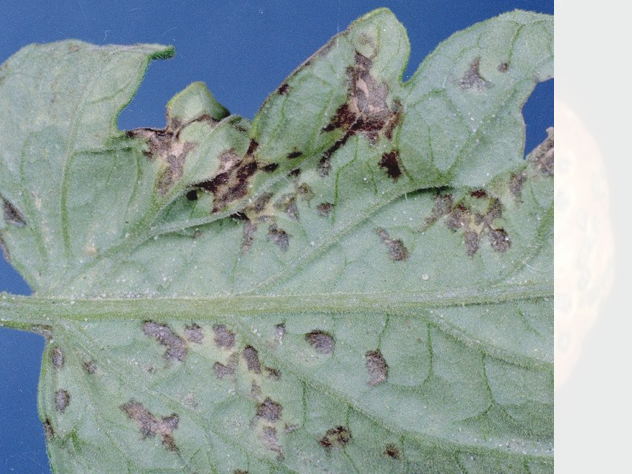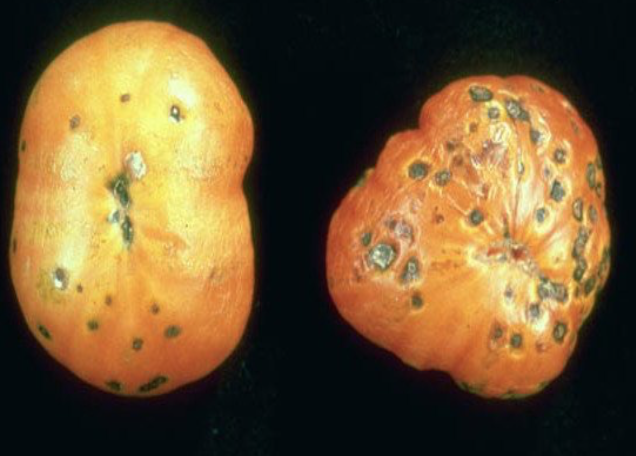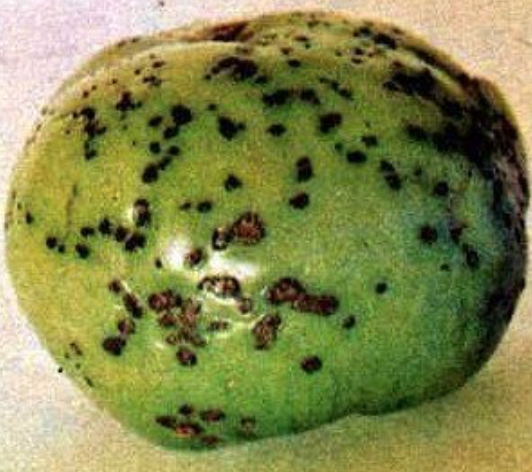Bacterial spot (Xanthomonas campestris pv. vesicatoria)
Credit: Biovision-Infonet

(c) Clemson University, www.insectimages.org

(c) Courtesy EcoPort (http://www.ecoport.org): Plant Protection Service Archives, Wageningen, NL

(c) A.M. Varela, A.A. Seif, icipe
It is another serious disease, occurring during the rainy season. It is most noticeable on fruits, but also causes damage to the foliage and stems. On green fruits, the initial spot is very small and water soaked. It eventually enlarges to about 6 mm. As the bacterial spot matures, it becomes brown and scabby without extending deep into the fruit. On foliage, irregular greasy, dark green spots, 2 to 3 mm wide, are observed. The spots eventually dry and the tissue often tears. The disease is transmitted through the seed.
| What to do: Use certified disease-free seed. Remove and destroy crop residues after harvest. Avoid working in the fields when plants are wet. Spray with copper fungicides; copper can control this disease fairly well except under heavy infection. For more on copper fungicide click here Grow resistant cultivars; this is the best control method for both bacterial diseases, but resistance is not universal owing to variable strains of the pathogens. |